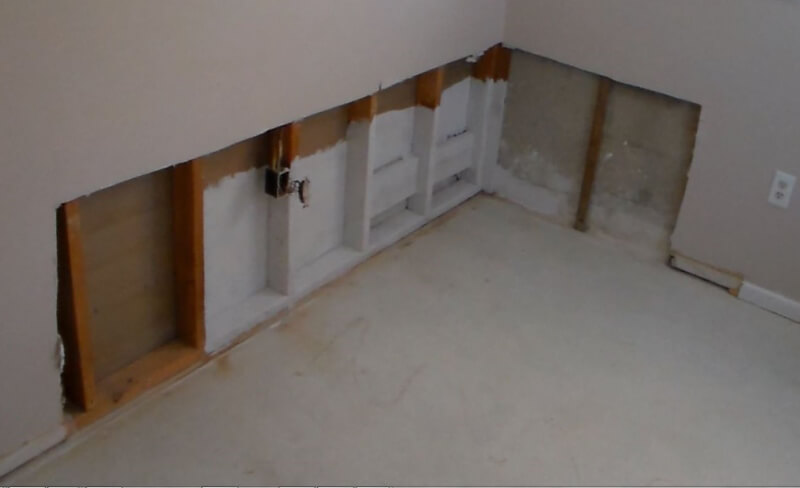
Repairing drywall is a common home improvement task that involves restoring damaged or deteriorated sections of drywall to their original condition. Whether it’s due to accidental holes, cracks, water damage, or general wear and tear, addressing these issues promptly is crucial to maintain the integrity and aesthetics of your walls. Some repairs are minor and can be fixed with a quick trip to Home Depot. Bigger jobs require an expert, and we’re here to help. To find out of you want to tackle the job yourself, keep reading.
To perform drywall repair, you will need a few essential materials and tools. Firstly, you will require joint compound or spackling paste to fill in cracks, holes, or damaged areas. A putty knife or drywall trowel will be necessary to apply and spread the compound smoothly. Sandpaper or a sanding block is needed to achieve a smooth finish after the compound has dried. Additionally, you may need drywall tape to reinforce joints or larger repairs. Other essential tools include a utility knife for cutting drywall, a screwdriver for removing screws, and a ladder or step stool to reach higher areas.
The first step in repairing drywall is assessing the extent of the damage. This involves examining the affected area to determine the underlying cause and the appropriate repair technique. For small holes and cracks, basic repair techniques can be used, while larger or more severe damage may require more extensive repairs or professional assistance.
For small holes and cracks, the repair process often involves filling the damaged area with a spackling compound or joint compound. The compound is applied to the damaged area using a putty knife, ensuring a smooth and level surface. Once the compound has dried, sanding is performed to achieve a seamless finish. Multiple coats of compound and sanding may be required for larger holes or deeper cracks to achieve a flush and unnoticeable repair.
Water damage can pose a more significant challenge and may require additional steps to ensure proper repair. Before addressing the damaged drywall, it’s important to identify and fix the source of the water issue to prevent further damage. Once the source is addressed, the affected area of the drywall is typically cut out and replaced with new drywall. The new piece is secured in place using screws or nails, and the joints are taped and mudded with joint compound. The repaired area is then sanded and finished to match the surrounding wall.
Properly repairing drywall is important for several reasons. First and foremost, it restores the structural integrity of the wall. Damaged drywall can compromise the overall stability and strength of the wall, potentially leading to further damage or safety hazards. By promptly addressing any holes, cracks, or water damage, you ensure that the wall remains structurally sound and performs its intended function.
Additionally, proper drywall repair is essential for maintaining the aesthetics of your home. Unrepaired damage can be unsightly, detracting from the overall appearance and value of your property. By properly repairing the drywall, you restore a smooth and uniform surface, allowing for a clean and visually appealing finish. This is particularly important if you plan to paint or apply wallpaper, as an uneven or damaged surface can negatively impact the final result.
Furthermore, addressing drywall repairs in a timely manner can help prevent further damage and more costly repairs down the line. Small cracks or holes can quickly worsen if left unattended, requiring more extensive repairs or even the replacement of entire sections of drywall. By proactively addressing any issues as soon as they arise, you minimize the risk of further damage and the associated expenses and inconvenience.
In conclusion, repairing drywall involves assessing the damage, applying the appropriate repair technique, and achieving a seamless and smooth finish. Properly addressing drywall repairs is important for maintaining the structural integrity and aesthetics of your walls. It ensures that the walls remain strong and stable while enhancing the overall appearance of your home. By promptly addressing any damage, you minimize the risk of further deterioration and more extensive repairs, saving both time and money in the long run.